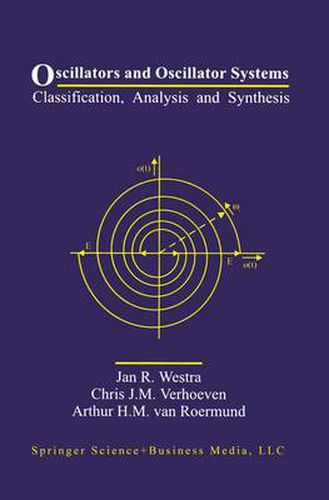Readings Newsletter
Become a Readings Member to make your shopping experience even easier.
Sign in or sign up for free!
You’re not far away from qualifying for FREE standard shipping within Australia
You’ve qualified for FREE standard shipping within Australia
The cart is loading…






This title is printed to order. This book may have been self-published. If so, we cannot guarantee the quality of the content. In the main most books will have gone through the editing process however some may not. We therefore suggest that you be aware of this before ordering this book. If in doubt check either the author or publisher’s details as we are unable to accept any returns unless they are faulty. Please contact us if you have any questions.
In many electronic systems, such as telecommunication or measurement systems, oscillations play an essential role in the information processing. Each electronic system poses different requirements on these oscillations, depending on the type and performance level of that specific system. It is the designer’s challenge to find the specifications for the desired oscillation and to implement an electronic circuit meeting these specifications.
As the desired oscillations have to fulfill many requirements, the design process can become very complex. To find an optimal solution, the designer requires a design methodology that is preferably completely top-down oriented. To achieve such a methodology, it must be assured that each property of the system can be optimized independently of all other properties.
Oscillators and Oscillator Systems: Classification, Analysis and Synthesis takes a systematic approach to the design of high-performance oscillators and oscillator systems. A fundamental classification of oscillators, based on their internal timing references, forms the basis of this approach. The classification enables the designer to make strategic design decisions at a high hierarchical level of the design process. Techniques, derived from the systematic approach, are supplied to the designer to enable him or her to bring the performance of the system as close as possible to the fundamental limits.
Oscillators and Oscillator Systems: Classification, Analysis and Synthesis is an excellent reference for researchers and circuit designers, and may be used as a text for advanced courses on the topic.
$9.00 standard shipping within Australia
FREE standard shipping within Australia for orders over $100.00
Express & International shipping calculated at checkout
This title is printed to order. This book may have been self-published. If so, we cannot guarantee the quality of the content. In the main most books will have gone through the editing process however some may not. We therefore suggest that you be aware of this before ordering this book. If in doubt check either the author or publisher’s details as we are unable to accept any returns unless they are faulty. Please contact us if you have any questions.
In many electronic systems, such as telecommunication or measurement systems, oscillations play an essential role in the information processing. Each electronic system poses different requirements on these oscillations, depending on the type and performance level of that specific system. It is the designer’s challenge to find the specifications for the desired oscillation and to implement an electronic circuit meeting these specifications.
As the desired oscillations have to fulfill many requirements, the design process can become very complex. To find an optimal solution, the designer requires a design methodology that is preferably completely top-down oriented. To achieve such a methodology, it must be assured that each property of the system can be optimized independently of all other properties.
Oscillators and Oscillator Systems: Classification, Analysis and Synthesis takes a systematic approach to the design of high-performance oscillators and oscillator systems. A fundamental classification of oscillators, based on their internal timing references, forms the basis of this approach. The classification enables the designer to make strategic design decisions at a high hierarchical level of the design process. Techniques, derived from the systematic approach, are supplied to the designer to enable him or her to bring the performance of the system as close as possible to the fundamental limits.
Oscillators and Oscillator Systems: Classification, Analysis and Synthesis is an excellent reference for researchers and circuit designers, and may be used as a text for advanced courses on the topic.